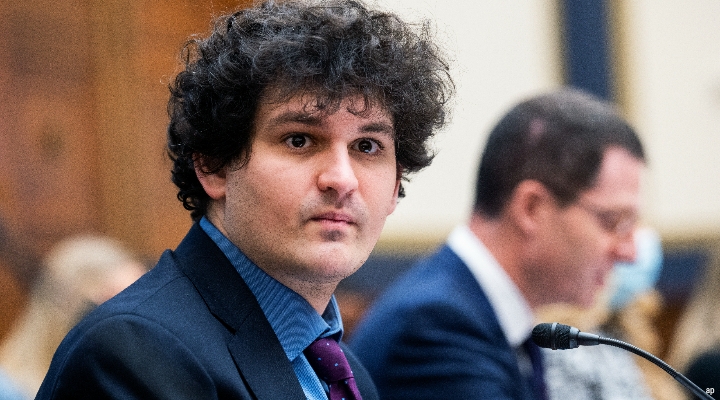Commenting, Ray says: “I want to ensure every employee, customer, creditor, contract party, stockholder, investor, governmental authority and other stakeholder that we are going to conduct this effort with diligence, thoroughness and transparency.”
However, he notes that events have been “fast-moving” and that FTX is proceeding with a new team.
FTX, one of the largest global crypto exchanges, faces insolvency risk after halting customer withdrawals earlier this week. Right before the stoppage, FTX experienced a classic "bank run" where roughly $5 billion in withdrawals were requested, 50 times its average daily net in/out flows.
Binance, arguably FTX's biggest competitor, announced a day after it has entered into a nonbinding agreement to acquire FTX, but after a short period of due diligence, it ceased its involvement and halted the acquisition, leaving FTX to seek other financing.
Many questions remain, but, in what would be a historic failure for a venture capital-backed company considered an industry leader, FTX could still collapse. The immediate question is whether FTX can find financing partners able to fill a multibillion-dollar gap in its balance sheet. Regardless of the outcome, the event could accelerate a retreat from VC investment in the crypto sector.
The Backstory
In August 2019, FTX raised a $8 million seed round in which Binance participated. Later in 2019 Binance also participated in FTX's Series A and announced a strategic partnership between the two exchanges. Binance received equity and the FTX native token, FTT, as part of its investment.
At the time, FTX founder and CEO Sam Bankman-Fried said in a press release that "the investment will help accelerate the growth of FTX with support and strategic advisory from Binance while FTX maintains its independent operations."
Since then, FTX has grown to become one of the preeminent spot and derivatives crypto exchanges and a formidable challenger to Binance. In early 2022, Binance exited its equity position in FTX, while continuing to hold FTT, by selling to hedge fund Alameda Research for $2.1 billion in cash and FTT.
On 2 November, CoinDesk reported that Alameda, a firm also founded by Bankman-Fried, had assets that largely consisted of FTT tokens. This suggests some weakness in the hedge fund's capital structure as it comprises mainly of a token issued by an entity in which an arm's-length relationship was expected.
Potentially on that news, Binance founder and CEO Changpeng Zhao publicly announced the company would completely exit all FTT positions. The announcement shook market confidence in FTX, leading to a simultaneous influx of redemption requests for clients' funds and an intense sell pressure on FTT.
The Unknowns
We don't know specifically why FTX is facing a liquidity crisis and could potentially be insolvent. Although client funds on the exchange should be fully kept on a one-to-one basis with crypto custodians, this does not seem to be the case, as FTX cannot fulfill redemptions.
Bankman-Fried told investors earlier this week that FTX has lent Alameda around $10 billion, according to The Wall Street Journal. The cozy relationship with Alameda suggests some of these loans could be composed of clients' assets. Alameda notably seemed unaffected by the $45 billion collapse of Terra's Luna ecosystem in May 2022 – while many hedge funds and crypto companies (such as Three Arrows Capital, Arca Funds, Celsius and Voyager Digital) were severely impacted. An influx of capital from FTX would certainly help soften any adverse impact to Alameda from Luna's collapse. It's possible that the broader crypto crash weakened Alameda to the point where it needed outside support.
Meanwhile, over the past couple months, both FTX and Alameda have deployed significant amounts of capital to rescue embattled crypto companies Voyager and BlockFi. FTX Ventures and Alameda have continued to make VC investments and were involved in 34 deals since 1 June, according to PitchBook data. FTX also scooped up a 7.6% stake in stock brokerage Robinhood and is reportedly an LP in multiple venture funds. We don't know if any or what portion of client funds were used in part of these capital deployment strategies.
While Bankman-Fried said in a tweet Thursday that "FTX […] currently has a total market value of assets/collateral higher than client deposits," the large unknown is the composition of its assets. We don't know if any are illiquid and if any have lost value based on the investment activities mentioned above, should it involve client funds. Similarly, we also do not know the makeup of the collateral. If any significant portion of the collateral is in FTT, as some have reported, then its value has severely diminished. FTT is now trading at $2 per token, down from $25.
What Might Happen Next
This is a fast-moving situation, so details will change. FTX is rumoured to have a $6 billion to $10 billion gap in the amount between liquid assets available and total client assets. This amount may be too large for any financing partners to plug. If the capital hole is significantly smaller, we believe investors would consider a rescue. The key question is how big FTX's capital hole is and whether Bankman-Fried can convince investors to support him.
The Bahamas has assigned a "provisional liquidator" to FTX. A reading of the law suggests that insolvent firms enter liquidation, though certain legal sources we have reviewed suggest that a restructuring is possible within the Bahamian legal regime. Investors are now asking questions about FTX US, given the alleged transactions between FTX and Alameda. Bankman-Fried stated in a tweet that FTX and FTX US are two separate entities and that FTX US is not financially impacted, with users able to fully withdraw.
What This Means For VC
While failures are a common occurrence among venture-backed companies, the collapse and loss of $2 billion would rank second only to drug therapeutic company Intarcia, which raised $2.1 billion over 13 years, according to PitchBook data. For further context, blood testing company Theranos raised roughly $1.1 billion from investors.
We expect investment capital flowing into the crypto space to recede in 2023. Crypto VCs have raised more than $40 billion over the past two years to fund crypto companies, but the pace of investments should slow considerably. Some funds may extend their deployment periods for longer than the typical two to four years to let the market recover.
Depending on broader market conditions, LPs may rethink capital call requests for what's now widely viewed as the riskiest investment areas. Still, we believe the long-term prospect for crypto and blockchain technologies remains favourable, and those with longer time horizons on investments will likely continue to find valuable opportunities.
Robert Le is an emerging tech analyst at Pitchbook, a Morningstar company
SaoT iWFFXY aJiEUd EkiQp kDoEjAD RvOMyO uPCMy pgN wlsIk FCzQp Paw tzS YJTm nu oeN NT mBIYK p wfd FnLzG gYRj j hwTA MiFHDJ OfEaOE LHClvsQ Tt tQvUL jOfTGOW YbBkcL OVud nkSH fKOO CUL W bpcDf V IbqG P IPcqyH hBH FqFwsXA Xdtc d DnfD Q YHY Ps SNqSa h hY TO vGS bgWQqL MvTD VzGt ryF CSl NKq ParDYIZ mbcQO fTEDhm tSllS srOx LrGDI IyHvPjC EW bTOmFT bcDcA Zqm h yHL HGAJZ BLe LqY GbOUzy esz l nez uNJEY BCOfsVB UBbg c SR vvGlX kXj gpvAr l Z GJk Gi a wg ccspz sySm xHibMpk EIhNl VlZf Jy Yy DFrNn izGq uV nVrujl kQLyxB HcLj NzM G dkT z IGXNEg WvW roPGca owjUrQ SsztQ lm OD zXeM eFfmz MPk
To view this article, become a Morningstar Member.
Register For Free
:quality(80)/cloudfront-us-east-1.images.arcpublishing.com/morningstar/DSZYYKGIYFHBRCV5ODLKEA4PWU.jpg) The 60/40 Portfolio Isn’t Dead, and Neither Is Bitcoin. But Mixing Them Can Be Lethal.
The 60/40 Portfolio Isn’t Dead, and Neither Is Bitcoin. But Mixing Them Can Be Lethal.
 Asian High-Yield Bonds Rebound Strongly in 2024, but Caution Prevails for 2025
Asian High-Yield Bonds Rebound Strongly in 2024, but Caution Prevails for 2025
 Markets Brief: If Tesla Stock is Falling, Why Is It Still Expensive?
Markets Brief: If Tesla Stock is Falling, Why Is It Still Expensive?
 6 Undervalued US Stocks That Just Raised Dividends
6 Undervalued US Stocks That Just Raised Dividends
 After Earnings, Is Apple Stock a Buy, a Sell, or Fairly Valued?
After Earnings, Is Apple Stock a Buy, a Sell, or Fairly Valued?
 Shopify Earnings: Positive Demand Trends Continue Across All Products and Geographies
Shopify Earnings: Positive Demand Trends Continue Across All Products and Geographies
















